Neiman Marcus 2003 Annual Report Download - page 8
Download and view the complete annual report
Please find page 8 of the 2003 Neiman Marcus annual report below. You can navigate through the pages in the report by either clicking on the pages listed below, or by using the keyword search tool below to find specific information within the annual report.-
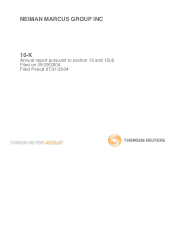 1
1 -
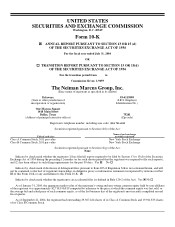 2
2 -
 3
3 -
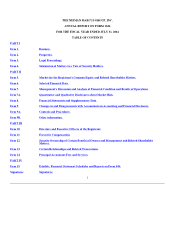 4
4 -
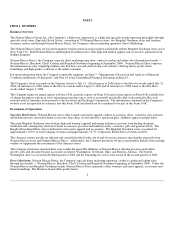 5
5 -
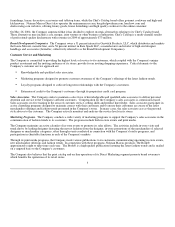 6
6 -
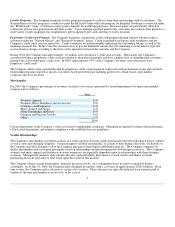 7
7 -
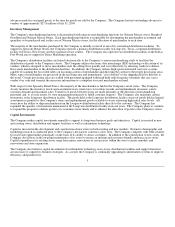 8
8 -
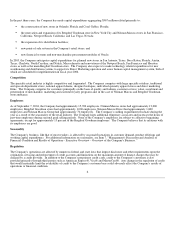 9
9 -
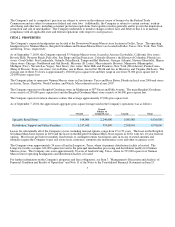 10
10 -
 11
11 -
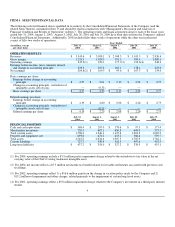 12
12 -
 13
13 -
 14
14 -
 15
15 -
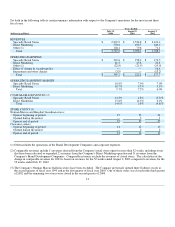 16
16 -
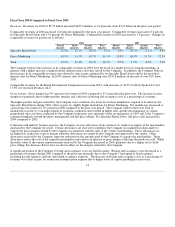 17
17 -
 18
18 -
 19
19 -
 20
20 -
 21
21 -
 22
22 -
 23
23 -
 24
24 -
 25
25 -
 26
26 -
 27
27 -
 28
28 -
 29
29 -
 30
30 -
 31
31 -
 32
32 -
 33
33 -
 34
34 -
 35
35 -
 36
36 -
 37
37 -
 38
38 -
 39
39 -
 40
40 -
 41
41 -
 42
42 -
 43
43 -
 44
44 -
 45
45 -
 46
46 -
 47
47 -
 48
48 -
 49
49 -
 50
50 -
 51
51 -
 52
52 -
 53
53 -
 54
54 -
 55
55 -
 56
56 -
 57
57 -
 58
58 -
 59
59 -
 60
60 -
 61
61 -
 62
62 -
 63
63 -
 64
64 -
 65
65 -
 66
66 -
 67
67 -
 68
68 -
 69
69 -
 70
70 -
 71
71 -
 72
72 -
 73
73 -
 74
74 -
 75
75 -
 76
76 -
 77
77 -
 78
78 -
 79
79 -
 80
80 -
 81
81 -
 82
82 -
 83
83 -
 84
84 -
 85
85 -
 86
86 -
 87
87 -
 88
88 -
 89
89 -
 90
90 -
 91
91 -
 92
92 -
 93
93 -
 94
94 -
 95
95 -
 96
96 -
 97
97 -
 98
98 -
 99
99 -
 100
100 -
 101
101 -
 102
102 -
 103
103 -
 104
104 -
 105
105 -
 106
106 -
 107
107 -
 108
108 -
 109
109 -
 110
110 -
 111
111 -
 112
112 -
 113
113 -
 114
114 -
 115
115 -
 116
116 -
 117
117 -
 118
118 -
 119
119 -
 120
120 -
 121
121 -
 122
122 -
 123
123 -
 124
124 -
 125
125 -
 126
126 -
 127
127 -
 128
128 -
 129
129 -
 130
130 -
 131
131 -
 132
132 -
 133
133 -
 134
134 -
 135
135 -
 136
136 -
 137
137 -
 138
138 -
 139
139 -
 140
140 -
 141
141 -
 142
142 -
 143
143 -
 144
144 -
 145
145 -
 146
146 -
 147
147 -
 148
148 -
 149
149 -
 150
150 -
 151
151 -
 152
152 -
 153
153 -
 154
154 -
 155
155 -
 156
156 -
 157
157 -
 158
158 -
 159
159 -
 160
160 -
 161
161 -
 162
162 -
 163
163 -
 164
164 -
 165
165 -
 166
166 -
 167
167 -
 168
168 -
 169
169 -
 170
170 -
 171
171 -
 172
172 -
 173
173 -
 174
174 -
 175
175 -
 176
176 -
 177
177 -
 178
178 -
 179
179 -
 180
180 -
 181
181 -
 182
182 -
 183
183 -
 184
184 -
 185
185 -
 186
186 -
 187
187 -
 188
188 -
 189
189 -
 190
190 -
 191
191 -
 192
192 -
 193
193 -
 194
194 -
 195
195 -
 196
196 -
 197
197 -
 198
198 -
 199
199 -
 200
200 -
 201
201 -
 202
202 -
 203
203 -
 204
204 -
 205
205 -
 206
206 -
 207
207 -
 208
208 -
 209
209 -
 210
210 -
 211
211 -
 212
212 -
 213
213 -
 214
214 -
 215
215 -
 216
216 -
 217
217 -
 218
218 -
 219
219 -
 220
220 -
 221
221 -
 222
222 -
 223
223 -
 224
224 -
 225
225 -
 226
226 -
 227
227 -
 228
228 -
 229
229 -
 230
230 -
 231
231 -
 232
232 -
 233
233 -
 234
234 -
 235
235 -
 236
236 -
 237
237 -
 238
238 -
 239
239 -
 240
240 -
 241
241 -
 242
242 -
 243
243 -
 244
244 -
 245
245 -
 246
246 -
 247
247 -
 248
248 -
 249
249 -
 250
250 -
 251
251 -
 252
252 -
 253
253 -
 254
254 -
 255
255 -
 256
256 -
 257
257 -
 258
258 -
 259
259 -
 260
260 -
 261
261 -
 262
262 -
 263
263 -
 264
264 -
 265
265 -
 266
266 -
 267
267 -
 268
268 -
 269
269 -
 270
270 -
 271
271 -
 272
272 -
 273
273 -
 274
274 -
 275
275 -
 276
276 -
 277
277 -
 278
278 -
 279
279 -
 280
280 -
 281
281 -
 282
282 -
 283
283 -
 284
284 -
 285
285 -
 286
286 -
 287
287 -
 288
288 -
 289
289 -
 290
290 -
 291
291 -
 292
292 -
 293
293 -
 294
294 -
 295
295 -
 296
296 -
 297
297 -
 298
298 -
 299
299 -
 300
300 -
 301
301 -
 302
302 -
 303
303 -
 304
304 -
 305
305 -
 306
306 -
 307
307 -
 308
308 -
 309
309 -
 310
310 -
 311
311 -
 312
312 -
 313
313 -
 314
314 -
 315
315 -
 316
316 -
 317
317 -
 318
318 -
 319
319 -
 320
320 -
 321
321 -
 322
322 -
 323
323 -
 324
324 -
 325
325 -
 326
326 -
 327
327 -
 328
328 -
 329
329 -
 330
330 -
 331
331 -
 332
332 -
 333
333 -
 334
334 -
 335
335 -
 336
336 -
 337
337 -
 338
338 -
 339
339 -
 340
340 -
 341
341 -
 342
342 -
 343
343 -
 344
344 -
 345
345 -
 346
346 -
 347
347 -
 348
348 -
 349
349 -
 350
350 -
 351
351 -
 352
352 -
 353
353 -
 354
354 -
 355
355 -
 356
356 -
 357
357
 |
 |

advances made for consigned goods, at the time the goods are sold by the Company. The Company had net outstanding advances to
vendors of approximately $27.8 million at July 31, 2004.
Inventory Management
The Company's merchandising function is decentralized with separate merchandising functions for Neiman Marcus stores, Bergdorf
Goodman and Neiman Marcus Direct. Each merchandising function is responsible for determining the merchandise assortment and
quantities to be purchased and, in the case of Neiman Marcus stores, for the allocation of merchandise to each store.
The majority of the merchandise purchased by the Company is initially received at one of its centralized distribution facilities. To
support its Specialty Retail Stores, the Company operates a primary distribution facility in Longview, Texas, a regional distribution
facility in Totowa, New Jersey and five regional service centers. The Company also operates two distribution facilities in the Dallas-
Fort Worth area to support its Direct Marketing operation.
The Company's distribution facilities are linked electronically to the Company's various merchandising staffs to facilitate the
distribution of goods to the Company's stores. The Company utilizes electronic data interchange (EDI) technology with certain of its
vendors, which is designed to move merchandise onto the selling floor quickly and cost-effectively by allowing vendors to deliver
floor-ready merchandise to the distribution facilities. In addition, the Company utilizes high-speed automated conveyor systems
capable of scanning the bar coded labels on incoming cartons of merchandise and directing the cartons to the proper processing areas.
Many types of merchandise are processed in the receiving area and immediately "cross docked" to the shipping dock for delivery to
the stores. Certain processing areas are staffed with personnel equipped with hand-held radio frequency terminals that can scan a
vendor's bar code and transmit the necessary information to a computer to record merchandise on hand.
With respect to the Specialty Retail Stores, the majority of the merchandise is held in the Company's retail stores. The Company
closely monitors the inventory levels and assortments in its retail stores to facilitate reorder and replenishment decisions, satisfy
customer demand and maximize sales. Transfers of goods between stores are made primarily at the direction of merchandising
personnel and, to a lesser extent, by store management primarily to fulfill customer requests. The Company also maintains certain
inventories at the Longview distribution facility. The goods held at the Longview distribution facility consist of goods held in limited
assortment or quantity by the Company's stores and replenishment goods available to stores achieving high initial sales levels. All
stores have the ability to ship merchandise from the Longview distribution facility directly to the customer. The Company has
expanded the quantity of inventories maintained at the Longview distribution facility in recent years. The Company plans to continue
to expand this program to deliver goods to its customers more timely and to enhance the allocation of goods to the Company's stores.
Capital Investments
The Company makes capital investments annually to support its long-term business goals and objectives. Capital is invested in new
and existing stores, distribution and support facilities as well as information technology.
Capital is invested in the development and construction of new stores in both existing and new markets. Extensive demographic and
marketing research is conducted prior to the Company's decision to construct a new store. The Company competes with other retailers
for real estate opportunities principally on the basis of its ability to attract customers. In addition to the construction of new stores, the
Company also invests in the on-going maintenance of its stores to ensure an inviting and customer-friendly ambiance in its stores.
Capital expenditures for existing stores range from minor renovations of certain areas within the store to major remodels and
renovations and store expansions.
The Company also believes capital investments for information technology in its stores, distribution facilities and support functions
are necessary to support its business strategies. As a result, the Company is continually upgrading its information systems to improve
efficiency and productivity.
5
